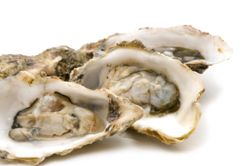Disease and stress resistance in fish and oysters
Scientists conducted physiological and genetic studies into the effects of pathogens and the stress of confinement on cultivated fish. In addition to summer mortality in oysters, a complex phenomenon related to possible environmental, physiological (gonad maturation) or pathological causes, was also investigated. Success was based on the development of new microassay techniques and the improvement of genetic maps for sea bream, sea bass and oysters. In addition, the position on the genome of traits that influence disease and stress resistance was determined for the four species under study. A multidisciplinary team comprising geneticists, physiologists and immunologists identified genes that responded to pathogen exposure and characterised DNA sequence variations known as single nucleotide polymorphisms (SNPs). Aquafirst scientists also conducted quantitative trait locus (QTL) analysis to identify the association between traits for stress or disease resistance and candidate genes. In addition, researchers created guidelines that incorporated identified QTL and traditional breeding approaches in oyster, sea bream, sea bass and trout. The consortium combined data on the work of the genome and QTL analysis to characterise genetic markers. Genotyping of sea bass and sea bream was based on tools developed under the auspices of the EU-funded Bridgemap and Bassmap projects. The Aquafirst project developed genomic tools and provided new information on genetics relating to aquaculture, including the cluster of genes involved in the stress response and disease resistance. The initiative was also successful in developing links and constructing common concepts between geneticists and physiologists.



